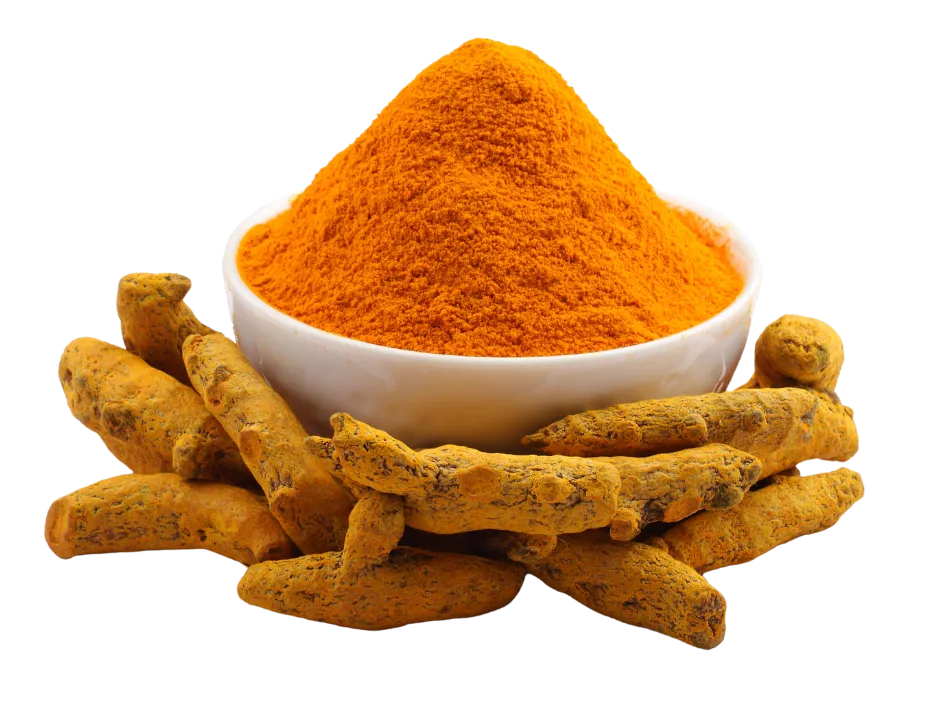Turmeric
Turmeric: The Golden Spice of India
Introduction
Turmeric, scientifically known as Curcuma longa, is a versatile spice celebrated for its vibrant color, distinct flavor, and numerous health benefits. It is derived from the rhizomes of the turmeric plant, which undergo a meticulous process of boiling, drying, cleaning, and polishing.
Botanical Profile
The turmeric plant is a herbaceous perennial that grows to a height of 60-90 cm. It features a short stem and a cluster of leaves that form a pseudo-stem through their sheaths. Typically, the plant has 7 to 12 leaves with green lamina on the upper side and pale green on the underside. These leaves measure 30-40 cm in length and 8-12 cm in width. The plant’s inflorescence consists of a central spike, 10-15 cm long, which produces about 30 flowers per spike. The flowers bloom one at a time from the axil of the bracts. Seeds develop in capsules, with one or more capsules found within each inflorescence..

Turmeric Origin and Cultivation
Turmeric thrives in tropical climates and is cultivated extensively from sea level up to 1200 meters above mean sea level (MSL). It grows well in light black, black clayey loams, and red soils, thriving in both irrigated and rainfed conditions. However, the crop is sensitive to waterlogging and alkaline soils. Its cultivation is widespread in tropical regions, particularly in India, which is the world’s largest producer and exporter of turmeric.
Uses of Turmeric
Turmeric is a cornerstone in Indian cuisine and is widely used to flavor and color a variety of dishes. As a primary ingredient in curry powders, it imparts a rich yellow hue and a warm, earthy flavor to food. Turmeric oleoresin, derived from the spice, is a popular additive in non-alcoholic beverages, mayonnaise, pickles, relishes, gelatins, butter, and cheese. The active component, curcumin, is a natural colorant used in the food and textile industries.
Beyond the culinary realm, turmeric is revered for its medicinal properties. It serves as a key ingredient in ointments, medicinal oils, and poultices. Known for its stomachic, carminative, tonic, blood-purifying, and antiseptic properties, turmeric is also used in cosmetics and traditional medicine. Furthermore, its aqueous extracts possess biopesticidal properties, adding to its versatile applications.
Conclusion
Turmeric, often referred to as the “Golden Spice of India,” is a staple ingredient in kitchens and industries alike. From enhancing the flavor and appearance of food to offering health benefits and industrial uses, turmeric is truly a wonder spice that continues to be an integral part of cultures worldwide. Its significance, both traditional and modern, cements its place as one of the most valued spices in the world.
